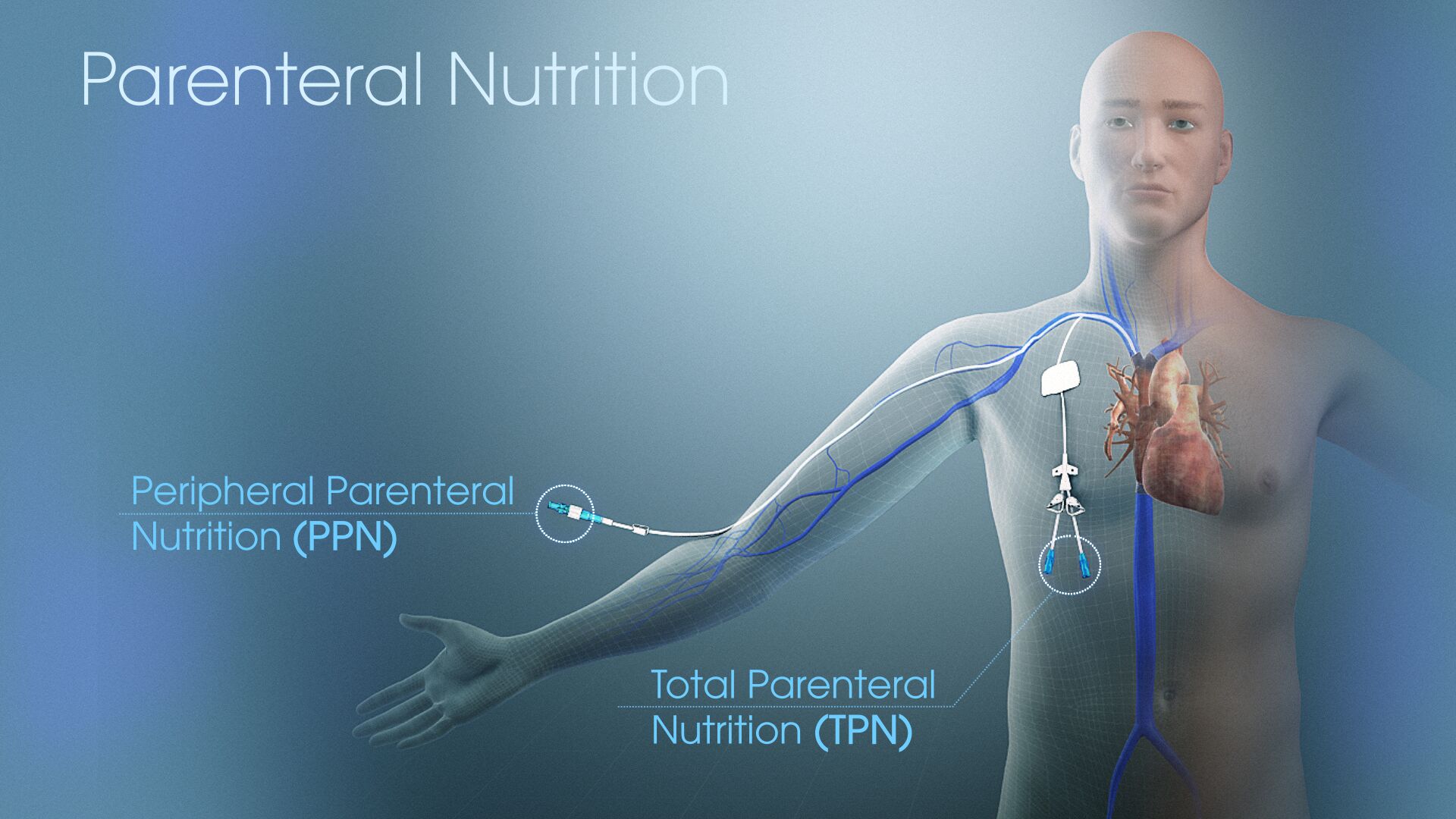Parenteral nutrition or parenteral feeding is simply defined as the intravenous administration of nutrients, maybe as a supplement or as the sole source of nutrition.
Total parenteral nutrition or TPN is a wonderful advance in medical nutrition therapy because it’s now possible to feed people who were once unfeedable.
Unlike the normal enteral nutrition in which nutrients are orally consumed and fed into the digestive system, in parenteral nutrition, nutrients are absorbed directly into the bloodstream.
Who needs Parenteral Nutrition?
Parenteral nutrition should be considered for patients who are malnourished or have a non-functioning gastrointestinal tract. It is, in fact, a boon for diseased individuals for whom food ingestion or digestion is a problem.
Parenteral feeding is helpful in cases of : Short bowel syndrome (where a part of the small intestine is missing or surgically removed leading to improper nutrient absorption), Gastrointestinal fistulas (abnormal opening in the intestines or stomach that causes the contents to leak out), bowel obstruction (complete or partial, preventing the passage of nutrients), or acute pancreatitis (inflammation of the pancreas that releases digestive enzymes).
A Brief On TPN
TPN solutions can be standardized or may be customized to suit individual patient requirements. Each patient is assessed by a team of specialised doctors, nurses, pharmacists and dietitians before commencing on parenteral nutrition, and on the basis of this collected data, the formula of TPN infusion is decided.
Dextrose or glucose solutions are generally used where the purpose is solely to gain energy. However, since it does not prevent malnutrition, sugar solutions are not considered TPN solutions.
Administration of TPN

Peripheral lines may be used to deliver short-term nutritional support, but central access is necessary for parenteral feeding of more than two weeks' duration. A large intravenous tube known as a central venous catheter is inserted into a vein in the chest or arm to deliver the nutrients. Central access allows delivery of more concentrated formulations into high-flow vessels. Choosing the appropriate catheter (PICC, Hickman, triple lumen, single lumen, double lumen catheters etc) is important. Parenteral nutrition can be administered at home too.
Conclusion
TPN is a preferred nutrition supplement compared to Peripheral Parenteral Nutrition (PPN). It is provided to the patient is incompetent of receiving any other form of nutrition due to a digestive disorder, or as a consequence of surgery or accident, whereas in PPN delivery, the patient may be obtaining nutrition from other sources too. The composition of both TPN and PPN solutions may be the same, but the concentration of each constituent is higher in TPN compared to PPN.

Digestive System: Role of Stomach and Small Intestine
Let’s see what happens to the food as it moves through various organs of the digestive system. Read More..








